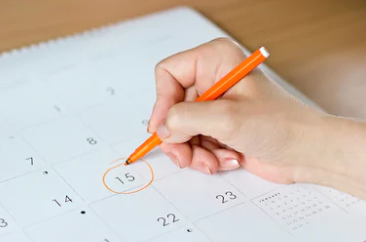I give my beginner piano students a lot of pieces to play after their first month or so, introducing at least one or two new pieces of music each lesson.
Being new to the piano, every piece of music has something in it for them to learn, be it technique, patterns, rhythm or note reading.
Some kids are able to grasp new pieces and techniques quickly so having many pieces keeps things interesting for them. Some kids take longer to work through a piece of music but this shouldn’t stop them from having fresh material. A piece of music doesn’t have to be “perfect” before we get started on the next piece.
In fact, there’s nothing more frustrating than only having the same eight bars to work on, with nothing else to play.

By introducing a variety of repertoire to students, there’s bound to be a piece they enjoy more than the others, one which naturally makes them sit and play. This is the start of effective practicing for many kids and it usually doesn’t take long for them to play that piece fairly well.
The concept of the “Play” Piece
In my studio, I like to distinguish between “Play” and “Practice” pieces for my students. Play Pieces are performance-ready pieces that a student can play correctly without needing any prompts or help from me. These pieces have essentially been mastered and as such, students don’t have to practice them any further. However, rather than forgetting about these pieces altogether, we mark the ones they really like with a coloured tab so they can easily find them to play whenever they feel like it.
I adopted this concept of the Play Piece from an essay written by Dr. Julie Knerr (co-author of Piano Safari) where she explains that children are happy to practice when they can play pieces they have already mastered. She refers to these pieces as “Review Pieces” but I re-named it for my students as it’s easier for them to remember to simply “play” them.
Children like to do what they do well. If they play pieces well, they will like to play those pieces. Keeping pieces as Review Pieces allows the student to build a repertoire and allows the teacher to continue to refine the student’s technique and musicality. This builds the student’s confidence, because he can play a group of pieces he knows really well.
Practice Pieces
As the name suggests, Practice Pieces are those that aren’t quite there yet and need to be actively practiced. It could be that a piece of music has just been newly introduced and the student is still getting familiar with it, or it could be that a piece of music presents specific challenges that the student needs to work through.
Sometimes during a lesson, I’ll listen to a Practice Piece and hear parts that need refining, but my younger students don’t usually pick up on the same things. In their minds, if they’ve played all the right notes then the piece is done. Never mind if the beat is off and they’ve ignored the rhythm completely!
What Constitutes a Play Piece?
To help my students understand how a Practice piece becomes a Play Piece, I put together a checklist to show them the areas they need to think about when practicing a piece of music. I’ve attached a copy of this Play Piece Checklist below in case you’ll also find this helpful to use at home.
There are essentially five main components to the checklist:
- Correct notes
- Correct rhythm
- Appropriate tempo
- Observing dynamics
- Articulation / technique
Of course for very early beginners, I’ll give a lot of leeway for Dynamics and Technique as these take a long time to develop and they won’t necessarily be able to exhibit excellence in these areas yet.

By giving each student a laminated copy of the checklist to keep in their folders or propped up on the piano at home, they can see easily what they need to work on during their weekly practice for any given piece. This allows them to self-evaluate outside of the lesson which is a good skill to have for eventually learning to play independently.
When it comes to Play Pieces, More is More
Play Pieces are a wonderful way to show students how practicing leads to enjoyable, tangible outcomes. Having a bank of repertoire that they can play is not only fun for kids, but it also shows them (and their parents) how much progress they have made. Seeing proof of progress is a great motivator for learning and I really like how this system really helps with continual progress.
How many Play Pieces do you or your kids currently have? Let me know in the comments below!

 It’s like learning to play tennis. You don’t have to compete in a tournament to develop a killer forehand. Similarly, you can be a great cook without putting yourself forward to be judged on MasterChef. Exams are a way to externally evaluate your skills but they’re not a must for every learning journey. In fact, piano exams can often be detrimental to a student’s enjoyment of piano to the extent that they give up playing altogether.
It’s like learning to play tennis. You don’t have to compete in a tournament to develop a killer forehand. Similarly, you can be a great cook without putting yourself forward to be judged on MasterChef. Exams are a way to externally evaluate your skills but they’re not a must for every learning journey. In fact, piano exams can often be detrimental to a student’s enjoyment of piano to the extent that they give up playing altogether.
